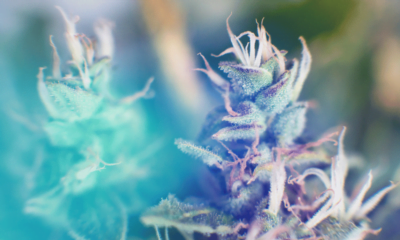A new study has found that cannabis terpenes were as effective as morphine at reducing chronic neuropathic pain, and a combination of the two analgesics enhanced pain relief without negative side effects.
Some prior studies have shown that the Cannabis sativa plant and its two primary cannabinoids, tetrahydrocannabinol, or THC, and cannabidiol, or CBD, can be effective in managing chronic pain; however, the effects are generally moderate and can come with unwanted psychoactive side effects.
According to findings, published in the journal PAIN, by researchers at the University of Arizona Health Sciences, terpenes, the compounds that give plants their aroma and taste, offer an alternative path to pain relief without adverse side effects.
Terpenes are found in all plants, and most plants have two dominant terpene species. Cannabis is unique in that it contains up to 150 terpenes with multiple terpenes acting as the dominant species.
Lead researcher John Streicher, PhD, a member of the Comprehensive Center for Pain & Addiction and a professor of pharmacology at the College of Medicine – Tucson, and the research team, tested five terpenes that are found in moderate to high levels in Cannabis: alpha-humulene, beta-caryophyllene, beta-pinene, geraniol and linalool.
In a prior study, Streicher’s team found that four of those terpenes mimicked the effects of cannabinoids, including a reduction in the sensation of pain, in animal models of acute pain. For this study, they used a mouse model of chemotherapy-induced neuropathic pain, a type of chronic pain that occurs when highly toxic chemotherapy medications cause nerve damage that results in pain.
The terpenes were tested individually and compared with morphine. The research team found that each terpene was successful in reducing the sensation of pain at levels near to or above the peak effect of morphine. When the terpenes were combined with morphine, the pain-relieving effects of all five terpene/morphine combinations were significantly increased.
“That was really striking to us, but just because something relieves pain doesn’t necessarily mean it’s going to be a good therapy,” Streicher said.
Opioids are often used to treat many types of pain, but they can come with a host of unwanted side effects.
Opioids activate the brain’s reward system, which is what can lead to addiction, and can cause tolerance, a condition that occurs when the body gets used to a medication and needs increasingly larger doses to have the same effect.
“We looked at other aspects of the terpenes, such as: Does this cause reward? Is this going to be addictive? Is it going to make you feel awful?” Streicher said.
“What we found was yes, terpenes do relieve pain, and they also have a pretty good side effect profile.”
None of the terpenes had reward liability, making them a low risk for addiction. Some of the terpenes also did not cause aversive behaviours, which suggests they could be effective therapeutics without producing distressing side effects.
Finally, researchers tested different routes of terpene administration: injection, oral dosing and inhalation of vaporized pure terpenes. They found that when terpenes were given orally or inhaled, the effects were significantly reduced or absent.
“A lot of people vape or smoke terpenes as part of cannabis extracts that are available commercially in states where cannabis use is legal,” Streicher said.
“We were surprised to find that the inhalation route didn’t have an impact in this study, because there are a lot of at least anecdotal reports saying that you can get the effects of terpenes whether taken orally or inhaled. Part of the confounding factor is that terpenes smell quite nice and it’s hard to disguise that aroma, so people could be kind of having the psychosomatic placebo-style effect.”
This is the first paper to examine the side effects of terpenes and Streicher will be using its findings to inform the next stage of research – can terpenes block the reward potential of an opiate such as morphine while at the same time enhancing its pain-relief potential?
He added: “This brings up the idea that you could have a combination therapy, an opioid with a high level of terpene, that could actually make the pain relief better while blocking the addiction potential of opioids.”

 Health5 months ago
Health5 months ago
 Industry6 months ago
Industry6 months ago
 Science4 months ago
Science4 months ago
 News5 months ago
News5 months ago
 News5 months ago
News5 months ago
 News5 months ago
News5 months ago
 News5 months ago
News5 months ago
 Industry5 months ago
Industry5 months ago












